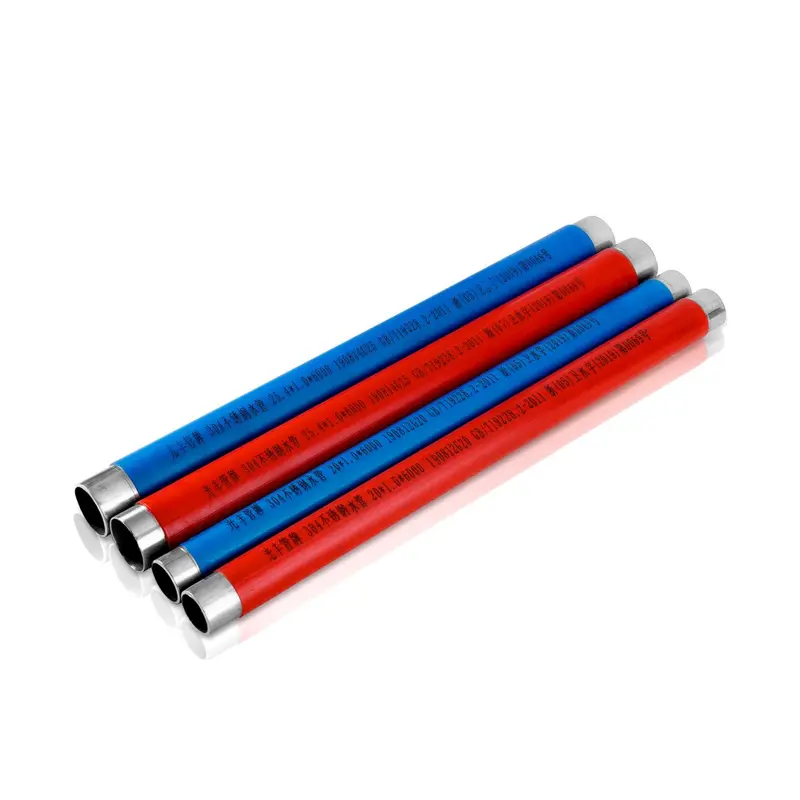How to Prevent Corrosion in Stainless Steel Pipes?
2025-09-12
Stainless steel pipes are renowned for their durability and resistance to rust, but they are not entirely impervious to corrosion. Understanding how to prevent corrosion is essential for maintaining the integrity and longevity of your piping systems. This guide provides practical strategies and highlights how selecting the right materials from the start is your best defense.
Understanding Stainless Steel Corrosion
Corrosion in stainless steel typically occurs when the protective passive chromium oxide layer on the surface is compromised. The most common types include:
1. Pitting Corrosion: Localized attack caused by chlorides or halides.
2. Crevice Corrosion: Occurs in stagnant micro-environments, like under gaskets or deposits.
3. Galvanic Corrosion: Happens when stainless steel is electrically connected to a more noble metal in a corrosive electrolyte.
Prevention starts with understanding these mechanisms to choose the right grade and maintenance practices.
Key Prevention Strategies
1. Material Selection: The most critical step is choosing the correct grade of stainless steel for your specific environment. For instance, 316 stainless steel, with its molybdenum content, offers superior resistance to chlorides compared to 304.
2. Proper Fabrication and Installation: Our factory emphasizes smooth finishing and proper passivation after fabrication to restore the protective oxide layer. Ensuring welds are smooth and complete prevents crevices where corrosion can start.
3. Regular Cleaning and Maintenance: Routine cleaning to remove dirt, chlorides, and other deposits is vital. This prevents the buildup of substances that can break down the passive layer over time.
4. Environmental Control: Whenever possible, control the environment by reducing exposure to chlorides, managing temperatures, and ensuring good drainage to avoid stagnant water.
Our Stainless Steel Pipe Specifications
At Guangfeng, we engineer our pipes to meet the highest standards of corrosion resistance. Our products are designed to provide a reliable foundation for your prevention strategies.
| Parameter | Specification | Benefit |
| Grade | 304/304L, 316/316L | Optimal chromium & nickel content for oxide layer formation; 316 offers enhanced Mo for chloride resistance. |
| Surface Finish | #4 Brushed, #8 Mirror, BA | Smooth surfaces minimize adhesion of corrosive agents and simplify cleaning. |
| Certification | ASTM A312, A270 | Compliance with international standards for material composition and performance. |
| Passivation | Nitric or Citric Acid Treatment | Enhances the natural chromium oxide layer for maximum corrosion resistance right from our factory. |
Frequently Asked Questions (FAQs)
Q1: What is the most common mistake that leads to stainless steel pipe corrosion?
The most common mistake is using the wrong grade of stainless steel for the application. For example, using Type 304 in a high-chloride environment like a coastal area or a swimming pool facility will likely lead to pitting corrosion. Always consult with a specialist to select a grade like 316L or even more resistant alloys for harsh conditions.
Q2: How does passivation help prevent corrosion?
Passivation is a crucial post-fabrication process. It involves treating the stainless steel pipe with an acid solution (like nitric or citric acid) to remove free iron particles from the surface that were embedded during machining. This allows the chromium in the alloy to form a uniform, continuous, and protective passive oxide layer, significantly enhancing the pipe's inherent corrosion resistance.
Partner with Guangfeng for Corrosion-Resistant Solutions
Preventing corrosion is a multifaceted effort that begins with selecting high-quality materials. At Guangfeng, we take pride in manufacturing stainless steel pipe that is built to last. Our rigorous quality control, from alloy selection to final passivation, ensures that our products provide exceptional performance in even the most demanding environments.
Trust our expertise to protect your investment. For a quote or technical consultation on your specific application, contact Guangfeng Industrial Co., Ltd. today. Let us provide you with the durable, reliable piping solutions your project deserves.
